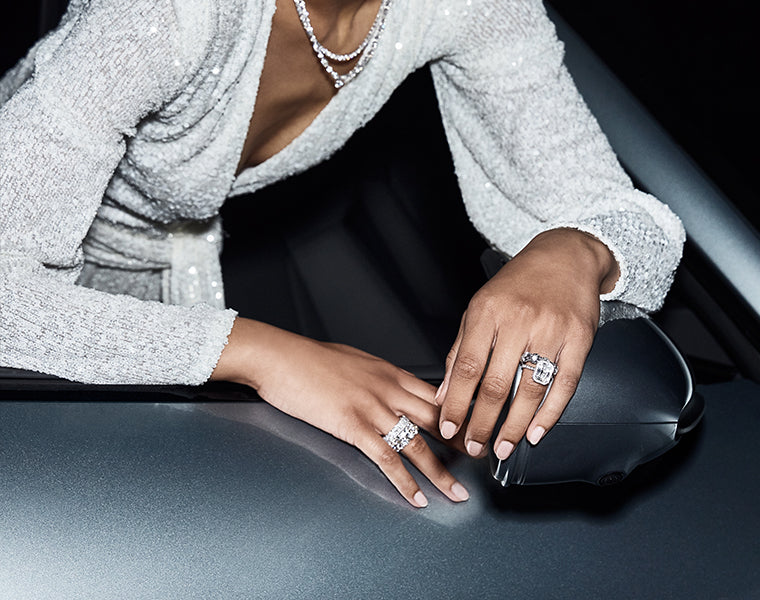Introduction
Welcome to the fascinating world of diamond cuts, where precision meets beauty, and every facet tells a story. Have you ever wondered why some diamonds sparkle more than others? Or how a simple cut can transform a rough stone into a mesmerizing gem? Join us as we delve into the intricate world of diamond cuts, exploring their history, significance, and the secrets behind their unparalleled brilliance.
The Evolution of Diamond Cuts
Diamond cutting is not merely about shaping a stone; it’s an art form that has evolved over centuries. From the rudimentary techniques of ancient civilizations to the precision cutting methods of modern times, the journey of diamond cuts is as rich and diverse as the gems themselves.
Ancient Beginnings
In the ancient world, diamonds were prized for their rarity and believed to possess mystical powers. Early civilizations, such as the Egyptians and the Greeks, experimented with rudimentary cutting techniques to enhance the beauty of these precious stones. However, the lack of advanced tools limited their ability to unleash the full potential of diamonds.
Renaissance of Diamond Cutting
The Renaissance period marked a significant milestone in the history of diamond cutting. Innovations in technology and the emergence of skilled artisans led to the development of more sophisticated cutting techniques. Diamonds began to be shaped with greater precision, revealing their brilliance in ways never seen before.
The Modern Era
Fast forward to the modern era, and diamond cutting has reached unprecedented levels of precision and perfection. Advanced tools, such as lasers and computer-aided design (CAD) software, have revolutionized the industry, allowing artisans to create intricate cuts with unparalleled accuracy. Today, diamonds are not just symbols of luxury; they are masterpieces of craftsmanship, reflecting the ingenuity of human creativity.
The Anatomy of a Diamond Cut
To understand the brilliance of a diamond, one must first grasp the intricacies of its cut. Each diamond is meticulously sculpted to maximize its optical properties, unleashing a dazzling display of light and fire. Let’s take a closer look at the key components that define a diamond cut.
The Four Cs: Cut, Clarity, Color, and Carat
When it comes to evaluating the quality of a diamond, experts consider the four Cs: cut, clarity, color, and carat weight. Among these factors, the cut plays a crucial role in determining the overall brilliance and beauty of the diamond. A well-cut diamond will exhibit exceptional sparkle and fire, regardless of its size or clarity.
Facets: Windows to the Soul of a Diamond
At the heart of every diamond are its facets—the small, flat surfaces that interact with light to create brilliance and sparkle. These facets are strategically placed and polished to precise angles, allowing light to enter the diamond, reflect internally, and disperse into a dazzling array of colors. The arrangement and symmetry of these facets are paramount in maximizing the diamond’s optical performance.
Popular Diamond Cuts: From Classic to Contemporary
Diamonds come in a variety of cuts, each with its own unique charm and character. From the timeless elegance of the round brilliant cut to the avant-garde brilliance of the princess cut, there’s a style to suit every taste and occasion. Let’s explore some of the most popular diamond cuts and their distinctive features:
- Round Brilliant Cut: Renowned for its unparalleled sparkle and versatility, the round brilliant cut is the most popular choice for engagement rings and fine jewelry. With 58 facets arranged in a symmetrical pattern, this classic cut maximizes light performance and exudes timeless elegance.
- Princess Cut: Sleek, modern, and undeniably chic, the princess cut is characterized by its square shape and sharp, unbroken lines. This contemporary cut offers a unique blend of brilliance and sophistication, making it a favorite among fashion-forward brides and trendsetters.
- Emerald Cut: Inspired by the elegant lines of emerald gemstones, the emerald cut is prized for its understated glamour and refined simplicity. With its elongated shape and step-cut faceting, this classic cut showcases the clarity and purity of the diamond, making it an ideal choice for those who appreciate timeless beauty.
- Oval Cut: Combining the brilliance of the round cut with the elongated silhouette of the marquise cut, the oval cut offers the best of both worlds. Its elongated shape creates the illusion of longer fingers, making it a popular choice for engagement rings and statement jewelry.
The Importance of Cut Quality
While all four Cs are important, experts often emphasize the significance of cut quality in determining the overall beauty and value of a diamond. A well-cut diamond will exhibit maximum brilliance, fire, and scintillation, captivating the beholder with its mesmerizing sparkle. In contrast, a poorly cut diamond may appear dull, lifeless, and lackluster, diminishing its allure and appeal.
The Ideal Cut: Striking the Perfect Balance
Achieving the perfect cut is a delicate balance between art and science. The ideal cut maximizes the diamond’s light performance by optimizing its proportions, symmetry, and polish. When executed with precision, an ideal cut diamond will exhibit a breathtaking play of light, drawing the eye and capturing the heart.
Beyond the Four Cs: The Fifth C of Cut Quality
In addition to the traditional four Cs, experts often refer to the fifth C of cut quality—the diamond’s light performance. This encompasses factors such as brightness, fire, and scintillation, which are influenced by the precision of the cut. By focusing on cut quality, consumers can ensure that they are investing in a diamond of exceptional beauty and brilliance.
Conclusion: Unlocking the Brilliance Within
In conclusion, diamond cuts are not merely about shaping a stone; they are about unleashing its true brilliance and beauty. From ancient civilizations to modern artisans, the art of diamond cutting has evolved over centuries, culminating in masterpieces of unparalleled craftsmanship. By understanding the intricacies of diamond cuts and the importance of cut quality, consumers can make informed decisions and choose diamonds that truly sparkle from within.
So, the next time you admire a dazzling man made diamonds, remember the journey it has taken—from rough stone to radiant gem—and appreciate the artistry and expertise behind its exquisite cut. As the saying goes, “diamonds are forever,” and with the right cut, their beauty will truly stand the test of time.
“A diamond is a chunk of coal that did well under pressure.” – Henry Kissinger










